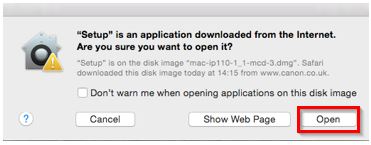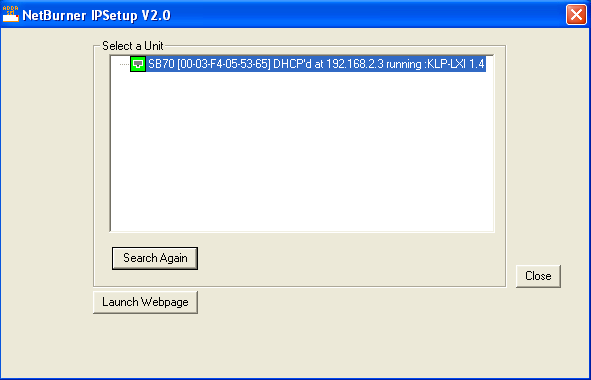

File pathway or location not found mac download powerpoint - are
Fix 'Windows Cannot Access the Specified Device Path or File' Error
Receiving Windows cannot access the specified device, path, or file. You do not have the appropriate permission to access the item error while trying to start a program or open a Word file. Do not worry about being unable to access your important files, EaseUS data recovery software can help find files which were even removed, deleted, hidden, transferred, etc.
Quick Fix - Windows Cannot Access The Specified Device Path or File

To check the permission of the file or folder, follow the steps below: Right-click the file or folder, and then select "Properties". Select the "Security" tab. Under Group or User names, click your name to see the permissions you have. Select "Edit", and then select to check the checkboxes for the permissions that you need, and then select "OK"Read more>>
Altogether, we have provided you with four effective solutions to solve Windows cannot access the specified device path or file error.
| Workable Solutions | Step-by-step Troubleshooting |
|---|---|
| Fix 1. Gain File Permission | Right-click the file or folder and select "Properties". Under Group or User namesFull steps |
| Fix 2. Check the File Location | Right-click on the file or folder and select Properties. Under the General tabFull steps |
| Fix 3. Unlock the File/Folder | Right-click the blocked file and then select "Properties". Select "Unblock"Full steps |
| Fix 4. Recover Lost Files | Choose the file location to scan. Let the software scan the lost filesFull steps |
Windows Cannot Access The Specified Device Path or File Error Details
"Windows cannot access the specified device, path, or file. You may not have the appropriate permission to access the item."
You may receive the exact error while you are trying to start a program or open a file on your Windows computer. Apparently, simply gaining the required permission doesn't solve the error effectively, that's why so many people are posting the same question and asking further help from Microsoft support and some prevailing forums.
So, what are the possible reasons that make Windows fail to access the specified device, path, or file as normal? What's the reason that you don't currently have permission to access the folder? What sensible suggestions should you follow to make sure that you don't necessarily lose programs and files?
Now, read on the causes and the solutions. Then solve this error without losing access to important data files on a specified device.
Four Causes for "Windows Cannot Access The Specified Device Path or File" Error
As long as you see the message "Windows cannot access the specified device, path, or file. You may not have the appropriate permissions to access the item", you must think of the four reasons below:
- You don't have permission to the file or file location.
- File location/path isn't accessible or even doesn't exist.
- Antivirus software prevents files from opening.
- The file has been deleted, removed, transferred, or hidden by the virus.
4 Effective Fixes for Windows Cannot Access The Specified Device
Now that you've known the reasons for the "Windows cannot access the specified device path or file" error, you can try the following methods to resolve the problem.
Method 1. Gain the Permission of the File or Folder
Now that the error suggests that "you may not have the appropriate permissions to access the item", you should first check if you have the permission of the file or folder. To gain permission to access a file or a location, do as follows.
Step 1. Right-click the file or folder and select "Properties".
Step 2. Under Group or User names, click your name to see the permissions you have.
Step 3. Select "Edit", where you can have permissions like full control, modify, read & execute, read, write, or special permissions. Choose the permissions you need and click "OK".
Method 2. Check the File Location
You may also get this error if the shortcut or installation is attempting to access a location that is not currently available such as a networked or a removable drive. Check the path of the file and make sure that the location is accessible.
Step 1.Right-click on the file or folder and select Properties.
Step 2. Under the General tab, check the location, make sure that the file path is correct and accessible.
Method 3. Disable Antivirus and Unlock the File/Folder
What antivirus software are you using? You can check to see if your antivirus software is blocking a file by temporarily disabling it, and then trying to open the file. Then unlock the file. In some cases, the file may be blocked by Windows. You can check the properties of a file to see if it is blocked.
- Right-click the blocked file and then select "Properties".
- In the General tab, select "Unblock" if the option is available.
Method 4. Recover the Deleted/Removed/Corrupted File
If the 'Windows cannot access the specified device, path or file' error was caused by an unknown deletion, corruption, feel free to download EaseUS data recovery software to bring lost data back. This powerful data recovery software can not only recover files but also recover photos, pictures, images, audios, and videos from HDD, USB, or external hard drive. If your inaccessible files or folders are on a removable hard drive or flash disk, connect it to a Windows PC where EaseUS hard drive recovery software installed. Make sure the software has detected your device.
Now, follow the steps to recover files that Windows cannot access normally.
Step 1. Choose the file location to scan.
Run EaseUS Data Recovery Wizard on your computer. Choose the drive where you lost files and click "Scan". If you lost files were on an external storage device, connect it to your computer firstly.

Step 2. Scan the lost files.
The software will start immediately a quick scan for deleted files, and later a deep scan will launch to scan more lost files all over the selected drive. After the scan, you can use the Filter to quickly filter a specific file type.

Step 3. Preview and restore files.
Double-click on a file allows for a full preview. Finally, select the desired files, click "Recover" and browse a location to save all the files at once.

All the provided fixes and file recovery solution aims to resolve 'Windows cannot access the specified device, path, and file' error, which might occur on desktop contents, diseinuak4web.net, and other locations when opening a file, trying to install, update or start a program.
Windows Cannot Access The Specified Device Path or File FAQs
'Windows cannot access the specified device, path, or files. You may not have the appropriate permission to access the item.' might appear when you try to start a program or open a file on your Windows computer. The following are some highly relevant topics to this problem, check the guides if you need.
1. How do you fix Windows cannot access the specified device path or file Windows 10?
- Gain the permission of the file or folder
- Check the file location
- Disable antivirus and unlock the file/folder
- Recover the deleted/removed/corrupted file
2. How do I get permissions in Windows 10?
- Open File Explorer. Browse and find the file or folder you want to have full access to.
- Right-click it, and select "Properties".
- Click the "Security" tab to access the NTFS permissions.
- Click the "Advanced" button. On the Select User or Group page, click "Find Now".
- Then select your user account and click "OK". On the Select User or Group page, click "OK".
- Click "Apply", then click "OK".
3. How do I get permission to access a network computer?
- Open Windows Explorer and go to the folder whose permissions you want to get.
- Right-click the folder and then choose "Properties" from the contextual menu.
- Click the "Sharing" tab; then click "Advanced Sharing". Click "Permissions". The dialog box shown appears. This dialog box lists all the users and groups who have permission for the folder.
- When you select a user or group from the list, the checkboxes at the bottom of the list change to indicate which specific permissions you've assigned to each user or group.
- Click the "Add" button. Choose or enter the name of your computer.
- Select the appropriate Allow and Deny checkboxes to specify which permissions to allow for the user or group.
- Click "OK" to finish the process.
4. How do you fix you must have read permissions to view the properties of this object?
- Take ownership of the file or folder.
- Get proper permissions.
- Recover lost data.

-
-
-